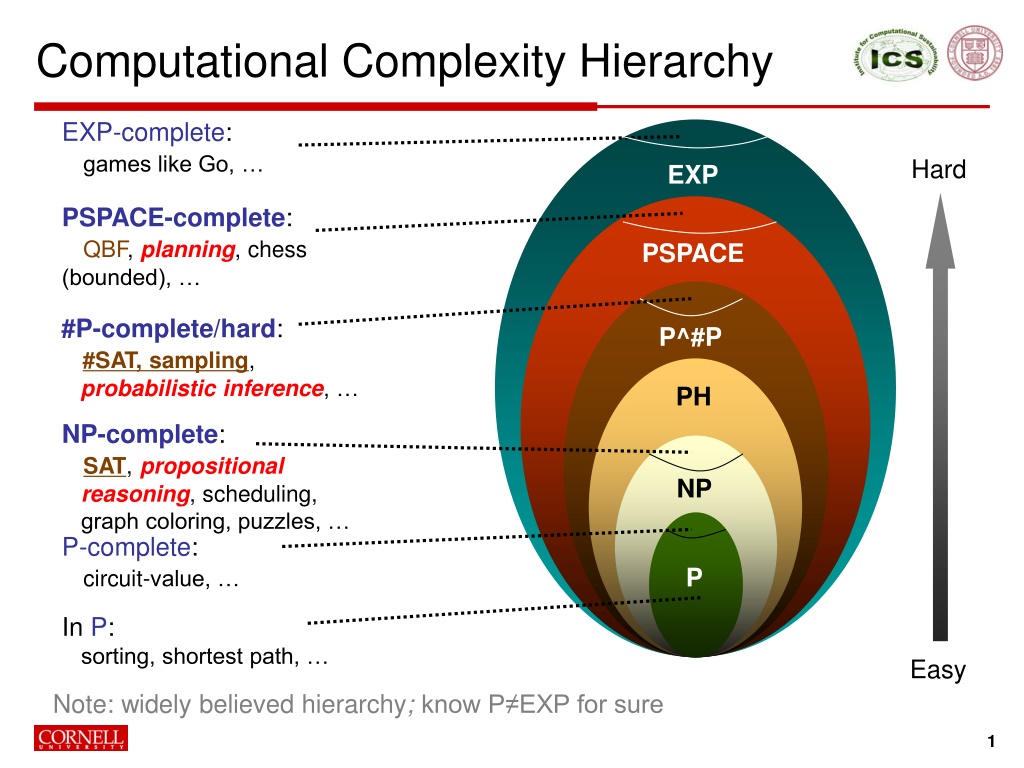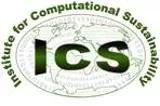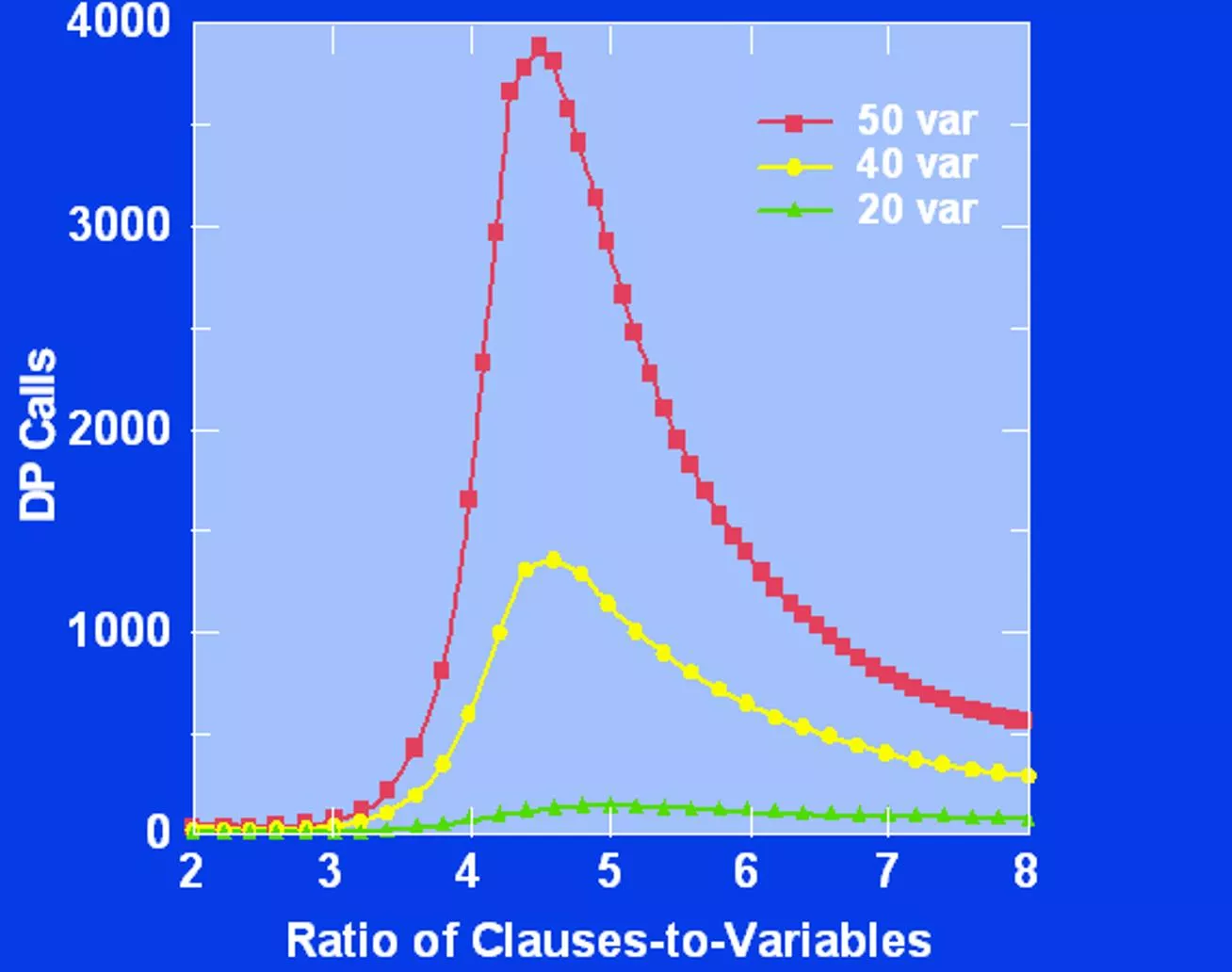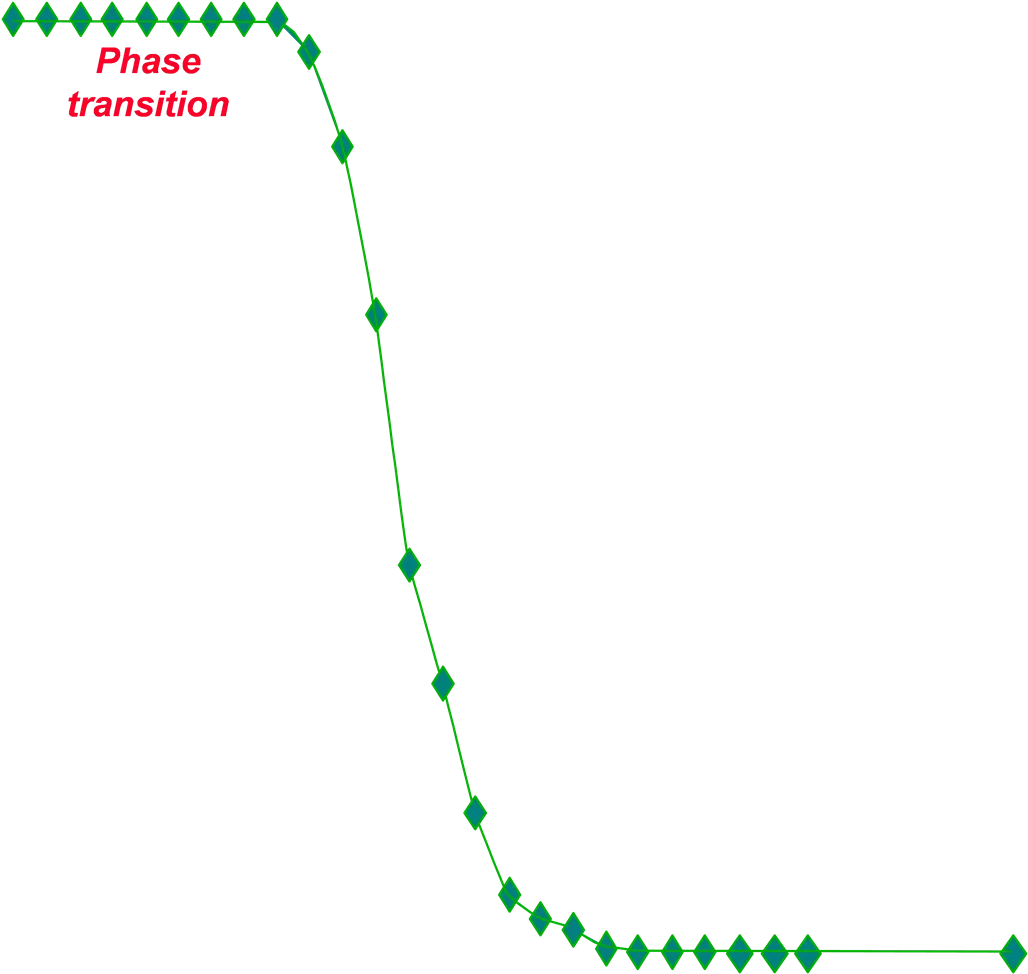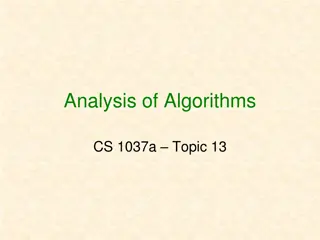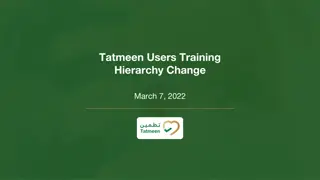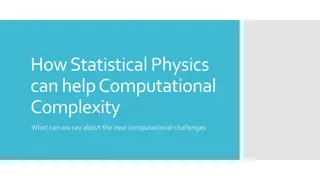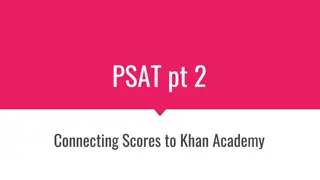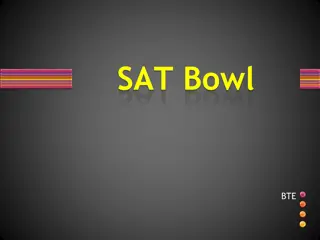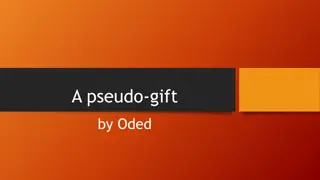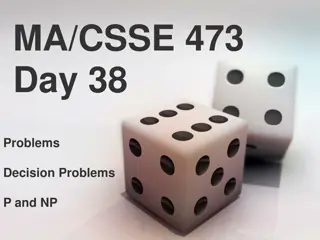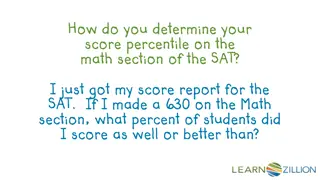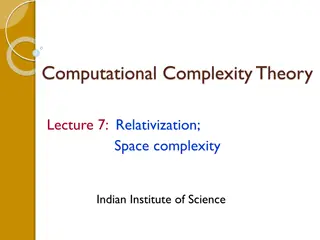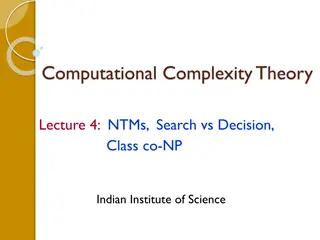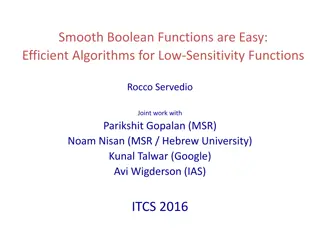Insights into Computational Complexity Hierarchy and SAT Algorithms
The computational complexity hierarchy explores classes of problems like EXP-complete, PSPACE-complete, and more. SAT algorithms, such as local search methods and survey propagation, offer new insights into practical complexity. Discover the interplay between tractable and intractable structures in problems like 3-SAT, leading to advancements in SAT solving. Uncover the key mechanisms for scaling up reasoning and enhancing scalability in problem-solving.
Download Presentation

Please find below an Image/Link to download the presentation.
The content on the website is provided AS IS for your information and personal use only. It may not be sold, licensed, or shared on other websites without obtaining consent from the author. Download presentation by click this link. If you encounter any issues during the download, it is possible that the publisher has removed the file from their server.
E N D
Presentation Transcript
Computational Complexity Hierarchy EXP-complete: games like Go, Hard EXP PSPACE-complete: QBF, planning, chess (bounded), PSPACE #P-complete/hard: #SAT, sampling, probabilistic inference, P^#P PH NP-complete: SAT, propositional reasoning, scheduling, graph coloring, puzzles, P-complete: circuit-value, NP P In P: sorting, shortest path, Easy Note:widely believed hierarchy; know P EXP for sure 1
Random 3-SAT Phase transition Linear time algs. Random Walk DP DP GSAT Walksat SP 2 Mitchell, Selman, and Levesque 92
Random 3-SAT Linear time algs. 5.19 Random Walk Upper bounds by combinatorial arguments ( 92 15) 5.081 DP 4.762 4.643 DP 4.601 GSAT Walksat 4.596 SP 4.506 3
The region of interest 4
New types of algorithms for SAT. For example, local search methods (e.g. WalkSAT) and survey propagation (SP), an advanced form of belief propagation. General insights into practical complexity: I) Easy-hard-easy patterns and critically constrained problems II) Surprise observation about mixing tractable and intractable structure. E.g. 2SAT and 3SAT. Partly explains the tremendous progress in SAT solving to follow. 5
Mixture of tractable and intractable structure From 2O(N) to O(N) scaling, if sufficient tractable structure is uncovered! Few 100s vars max Millions of variables! 41% 3-SAT --- exponential scaling Medium cost Sudden collapse of complexity! Mixing 2-SAT (tractable) & 3-SAT (intractable) clauses. 40% 3-SAT --- linear scaling Num variables (Monasson, Selman et al. 99)
Scaling-Up Reasoning Principle I Key to scalability in reasoning is uncovering substantial tractable substructure. Mechanisms: I) Constraint propagation (CSP) and unit-propagation (SAT). Incomplete but highly efficient sub-inference. II) Clause learning ( no-good learning ) adds derived constraints during search. Helps I). Conflict Directed Clause Learning (CDCL) SAT solvers. |||) Randomization, restarts, and heuristic branching. Backdoor variables. 7
Scaling-Up Reasoning, cont. Techniques scale up reasoning from a few hundred of variables max in the early 90s to 10+ million variable problems for current SAT solvers. We can now revisit McCarthy s automated inference paradigm. Contributors: [random order] Gomes, Kautz, Sabharwal, Ermon, Kroc, Levesque, Horvitz, Bessiere, Walsh, Gent, Zecchina, Mitchell, Leyton- Brown, Chen, Huang, Rintanen, Hoos, Achlioptas, Cheeseman, Kirkpatrick,Sandholm, Chayes, Brogs, Marques-Silva, Malik, O Sullivan, Zhang, Lynce, Horvitz, Willams, van Harmelen, van Gelder, Sinz, Dilkina, Yexiang, Darwich, LeBras, Wei Wei, Freuder, Wilson, Kambhampati, Hoffmann, Bierre, Papadimitriou, Bacchus, Beame, Pitassi, McAllester, Weld, Geffner, Samulowitz, Sellmann, Seider, Clarke, Impagliazzo, Manya, Ansotague, Szeider, and others!! 8
Aside: A Taste of Problem Size Consider a real world Boolean Satisfiability (SAT) problem, from formal verification. I.e., ((not x_1) or x_7) ((not x_1) or x_6) etc. x_1, x_2, x_3, etc. our Boolean variables (set to True or False) Set x_1 to False ??
10 pages later: I.e., (x_177 or x_169 or x_161 or x_153 x_33 or x_25 or x_17 or x_9 or x_1 or (not x_185)) clauses / constraints are getting more interesting Note x_1
Finally, 15,000 pages later: Search space of truth assignments: Current SAT solvers solve this instance in a few seconds!
